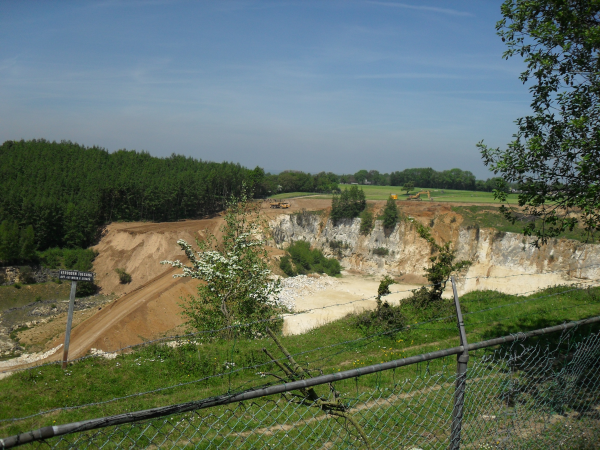Groeve 't Rooth EarthCache
This cache has been locked, but it is available for viewing.
-
Difficulty:
-

-
Terrain:
-

Size:  (other)
(other)
Please note Use of geocaching.com services is subject to the terms and conditions
in our disclaimer.

In de groeve ’t Rooth wordt kalksteen (mergel) ontgonnen, die gebruikt wordt voor velerlei doeleinden. De verwerking van de mergel vindt plaats in de fabriek Ankerpoort in Borgharen. De mergel die zicht hier bevindt, is ontstaan in de Noordzee, die tussen 70 en 65 miljoen jaar geleden, in het Krijttijdperk ook Limburg bedekte. In de mergel zijn de resten van dieren en planten (fossielen) te vinden die toen in de zee geleefd hebben. Een bijzondere ontdekking was de vondst van een Mosasaurus door Jan Vollers uit Bemelen in 1953. Het verlaten gedeelte van de groeve is een momenteel een natuurmonument waarin allerlei amfibieën (o.a. de geelbuikvuurpad) leven.
LET OP!!! LISTING IS AANGEPAST OP 9-2-2016
Om deze cache te mogen loggen moet je de volgende vragen beantwoorden, deze zijn niet meer ter plaatse te vinden, zoek ze op het internet.
Onder welke naam startte in 1938 deze groeve?
Door welke stichting wordt dit natuurgebied nu beheerd?
Maak een foto van de groeve zelf en/of een foto van jezelf met gps bij de groeve.
LOGS MET EEN VERKEERDE FOTO OF VAN MENSEN MET EEN FOUT ANTWOORD WORDEN DIRECT VERWIJDERD!!!
VEEL SUCCES
ENGLISH VERSION
In the groove ’t Rooth is limestone (marl) exploited, which is used for several purposes. The processing of marl takes place in the factory Ankerpoort in the place Borgharen. The marl that here is found, is arised in the Northsea, that between 70 and 65 milion years ago, in the Krijtseaperiod also Limburg has covered. In the marl are the surplusses of animals and plants (fossils) to find that had lived in the sea. A special discovery was the Mosasaurus by Jan Vollers from Bemelen in 1953. The desolute part of this groove is now a nature reserve where several amphibians life (geelbuikvuurpad).
To log this cache you must answer the following questions.
Which name has this groove also since 1938?
Which foundation explore this groove now?
Take picture of the mine and take a picture or you and your gps at the groove.
LOGS WITH A WRONG PHOTO OR WRONG ANSWERS WILL BE DELETED IMMEDIATELY!!!!
GOOD LUCK
Additional Hints
(No hints available.)